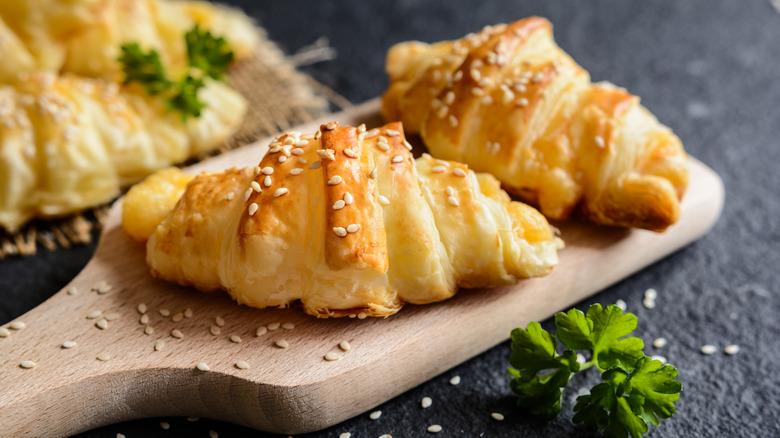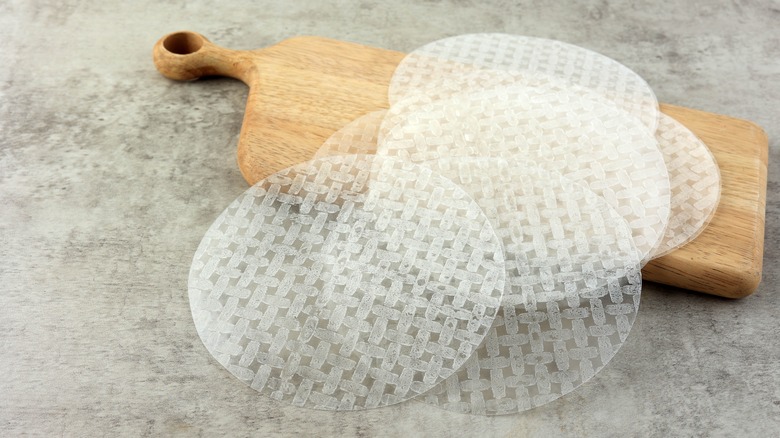Did You Know You Can Make A Croissant Out Of Rice Paper?
Frankly, a croissant made out of rice paper sounds too good to be true, but shockingly, it actually works. To make this TikTok-viral sensation, sheets of rice paper (the kind you use for spring rolls) are first soaked in a French toast-like mixture of eggs, milk, sugar, melted butter, vanilla, and baking powder. Then they are stacked and cut to make layers, rolled into that signature croissant shape, and baked. What goes in looking floppy, soggy, and yellow comes out golden brown, puffy, and decidedly crispy.
@homemeide Tried the viral rice paper croissant 🥐 They're gluten free and turned out wayyy better than I expected. Also very fun and easy to make, 10/10 would recommend. #croissant #ricepaper #glutenfree
The transformation is so dramatic that it seems a little bit like magic, but do they actually taste like a French croissant? Well, Parisians and basically anyone else will probably tell you no, but they are still pretty darn flaky, buttery, crunchy, and satisfying. The rice paper creates flaky layers, the baking powder gives a rise that mimics that airy texture of a proper pastry, and the ingredients in the soak lend richness and flavor.
Instead of being tender and bready, these rice paper croissants lean more chewy and eggy. For those that love the taste of Hong Kong or Portuguese egg tarts and the distinct texture of mochi desserts, this treat may be just the thing for you. They also rely on affordable pantry staples, which means you can whip them up in a flash, and they are gluten-free!
Tips for making rice paper croissants
A great classic butter croissant is all about rich and tender flaky layers and a super crisp outside. While it's impossible to perfectly replicate one with rice paper, there are a few steps you can take to maximize the qualities that make a traditional croissant so delicious.
First, you want to make sure the butter is soaked into each layer of rice paper. When the other ingredients are too cold, the butter will just clump up, and then it will not distribute evenly. To prevent this from happening, make sure the eggs and milk are at a cool room temperature. Also, slowly dribble the melted butter into the beaten eggs while whisking so that the two components blend smoothly, before adding everything else.
As for creating as many layers as possible, you may be tempted to stack the rice paper sheets sky-high, but you are actually better off using only about three. Otherwise, the sheets get too heavy and stick together, and the texture ends up being doughy and dense. Rolling the paper loosely also helps with ensuring that the layers remain distinct as the croissants cook.
Finally, a crisp exterior is super important. The egg and butter soak ensures a golden brown color, but a little extra sprinkle of sugar really takes it home. Demerara, turbinado, or plain old granulated sugar will all work to give these super unique shortcut croissants a delectable, caramelized, crackly crust.


